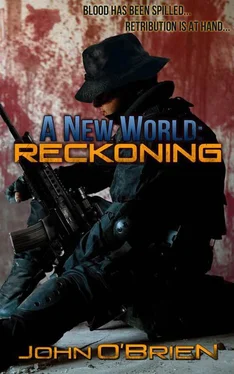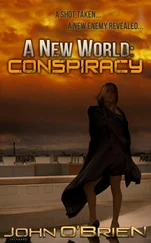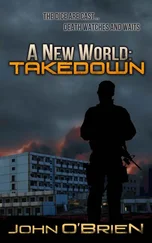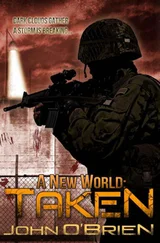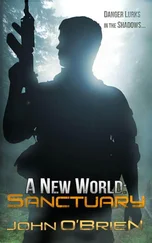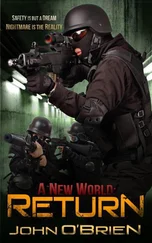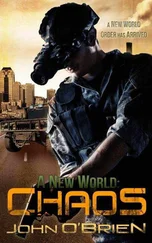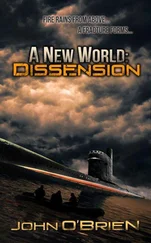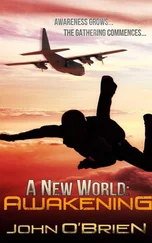The mountains will eventually give way to the flat farmlands of the upper plateau, with the three hundred-plus mile flight to the facility taking us just under an hour. In the back, Gonzalez makes sure the recording equipment is ready. We’ll gather footage in every available spectrum that we can and analyze it later.
With the mountainous terrain drifting under our nose as we drone onward, Gonzalez calls, “Sir, I’m picking up a line of thermal images. They’re at…about our ten o’clock position and twenty miles.”
“Give me a heading,” I reply.
“Uh…turn left to, well, about 300 degrees, sir.”
I bank the aircraft, hoping that we’ve found some indication of those who attacked Greg and his team. They couldn’t have traveled very far as the Stryker had still been smoldering and the blood on the dog tags was still in the process of drying. I feel the simmering anger begin to stir.
A few minutes takes me closer, and I eventually make out a line of vehicles moving along a road leading through one of the mountain passes. Steep slopes on both sides of the highway rise almost from road’s edge. An initial glance shows a long column of Strykers and Humvees.
Turning parallel to the column, I radio, “Gonzalez, I want an accurate count and type of vehicles. We’re looking for anything that looks like it has anti-air capabilities.”
“Will do, sir.”
We fly north along the convoy at altitude to get a clear picture of what we are dealing with.
“Sir, I count twenty Humvees with eight Strykers. All of the Humvees have turret-mounted weapons and the Strykers with long guns. I don’t see anything that might have anti-air, but I can’t be positive about that,” Gonzalez calls as we pass the northern end of the formation.
“Copy. We’re going to maneuver east and descend coming at them from the north. We’re going to try and block them in that pass. Your first target will be the northernmost vehicle,” I state.
“We’ll be ready.”
Pulling the throttles back, I begin a turning descent over the ridgeline, planning it so we roll out over a valley to the north that the pass opens into. Leveling off at what I judge to be about four thousand above the ground, we turn toward the pass and the head of the column.
Setting up an orbit, I see an eruption of dirt next to the lead vehicle. A few seconds later, a cloud of smoke obscures the vehicle, one of the Strykers. Moments go by. Then the nose, followed by the rest of the armored vehicle, emerges from under the billowing cloud of dark smoke.
“Direct hit. Re-engaging,” Gonzalez calls.
Another explosion boils up from the target. This time the Stryker doesn’t emerge and, as the smoke clears, it becomes obvious that it’s disabled. Dark, oily smoke rises from the engine compartment, mixing with that already towering from the impact.
“Direct hit. Kill,” Gonzalez says, the satisfaction obvious in her voice.
With taking out the Stryker, the vehicles on the ground react. At first, the reaction is slow and only a few tracers begin arcing up in our direction. Then, others join in. Red tracers reach upward, seeming slow at first as if crawling inches at a time, then speeding up dramatically as they streak behind. It won’t be too long before they find the correct lead and those streaks of red begin getting closer. Seeing those red lines as they whiz by to the rear reminds me of another time…
* * *
The mission was to accompany a two-ship of helicopters into someone’s back yard. One helicopter carried a team that was to be dropped off to observe a crossroads during times when satellite coverage was unavailable. It was fairly common knowledge when surveillance satellites rose and set below the horizon. Movement was conducted during the blackout periods, so teams on the ground were necessary to gain insight into what was actually going on.
The second helicopter was there in case something went wrong and a pickup became necessary. We were there to refuel the helicopters as the insertion was deep within that back yard.
We planned our route based on known radar coverage, utilizing gaps and terrain to mask our flight. It was to be a night flight, avoiding roads and settlements, and using saddles between peaks to cross over ridgelines.
We crossed the border, flying low and using the ridges to mask us. FLIR (Forward-Looking Infrared Imaging) assisted with our low-level night flight. We flew along one side of a ridge and crossed over at a low point, shoving the nose down on the other side. Any valleys were crossed on the deck at right angles, away from intersections and any settlements.
The flight was going well; us flying with our flaps lowered to accommodate the slower speed of the helicopters. Crossing a saddle of a particular ridgeline, the aircraft became hung on an updraft coming from the other side. With the control wheel pushed over, we remained suspended, the altitude hanging. The threat systems illuminated as radars became aware of our presence.
Moments later, the sky lit up with tracers from mobile gun platforms situated in the hills, most angling in our direction but not directly at us as the radars hadn’t achieved a very good lock. However, the Fourth of July was occurring, and it was obvious that someone didn’t like us being there. Most of the tracers slid behind or to the side as we flew through the updraft and dove for the deck.
One tracer stayed in the same location in the windshield. It didn’t appear to have any movement, only grew larger by slow degrees. If something in your view is moving but doesn’t change in relation, if it remains in the same spot and is growing larger, you are on a collision course.
I became fascinated and locked onto the tracer. It was almost hypnotizing. Thoughts raced. Robert was still young, and the thought that I wouldn’t see him again ran through my mind. I was looking at my imminent demise approaching and I was going to witness it in slow motion. It was happening so fast that I couldn’t react, but so slow at the same time.
The tracer continued to grow, seeming to fill my entire consciousness. At the last moment, it picked up speed at a dizzying rate, flashing in front of the windscreen and rocketing overhead into the night sky.
“Holy shit,” I heard my co-pilot exclaim.
Real time then took hold of my senses. The mission was aborted, only to be flown without a problem two nights later. Yeah, I became a little wary of tracers following that experience.
* * *
I bank the aircraft away and begin a climb. We can only engage one vehicle at a time. It isn’t that Gonzalez is slow with the systems, it’s that we sent all but one of our ammo loaders with Robert to help with Greg. The remaining one will have his hands full as we work over the convoy below. There is no doubt in my mind that it’s these vehicles that killed our team, and I intend to make them pay.
“Gonzalez, I’m turning away. We’ll come at them from different altitudes and directions. I want you to mark the vehicles and we’ll hit and run. We have the northern end blocked but that won’t last long. Concentrate on the southern end on the next pass. Once we have them blocked on both sides, we’ll hit the ends at random,” I say, leveling off and maneuvering for a run.
I would like to say we dart in, hit them, and flash away. However, there is no ‘darting’ or ‘flashing away’ in a 130. As we begin each run, tracers rise from the multitude of vehicles, trying to intersect with our flight path. I adjust our altitude with each run based on where the tracers fell from the previous one. If the tracers fell behind, I climb to throw off any adjustments that the ones below make. By ascending, it will increase the distance and they’ll continue to fall behind. If they begin leading more, I descend so that the rounds will continue to pass in front. This game lasts for as long as we hit them.
Читать дальше
